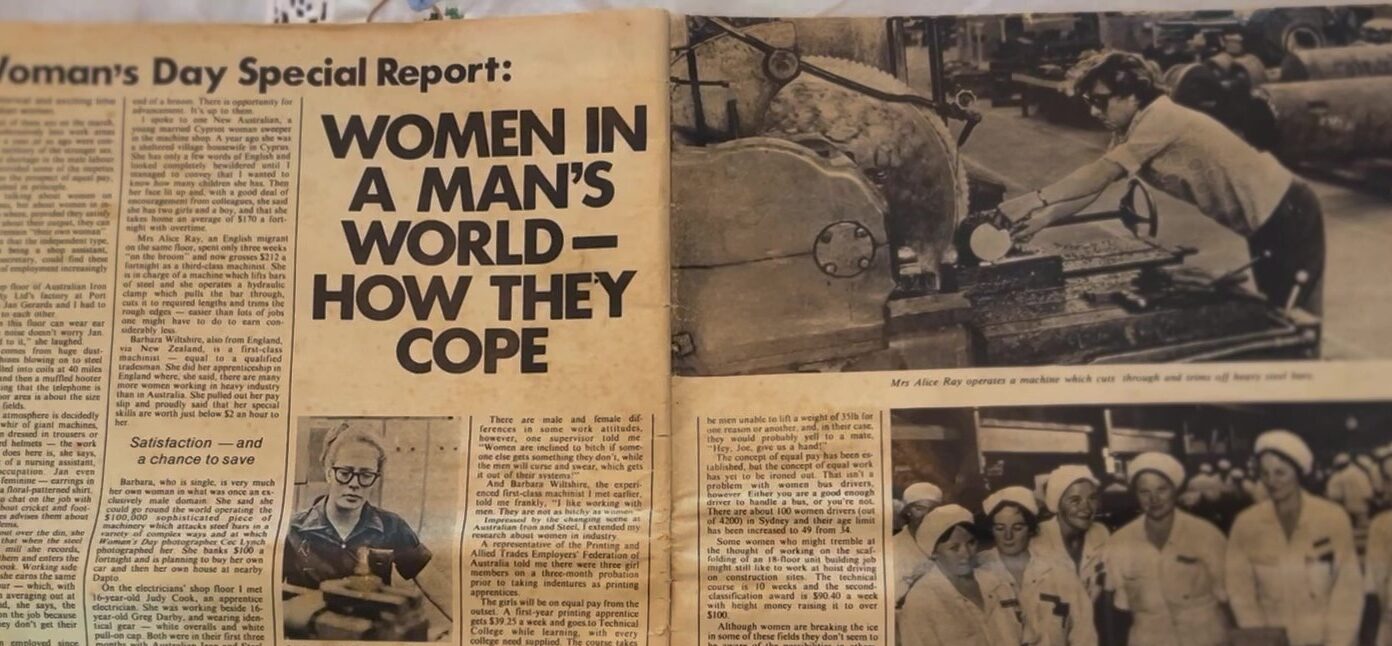Wendy Carr is the National Legal Director at the mighty Maritime Union of Australia. But before ascending to her current role, Wendy Carr was an apprentice, then a qualified electrical worker and, of course a member of the Electrical Trades Union of Australia.
In 1974 Australia, Iron and Steel at Port Kembla employed the first group of women apprentices in the country. Wendy Carr was one of 8 women that commenced one of those apprenticeships. In the first year of her apprenticeship, Wendy was at a training electrical shop which had several different sections – learning the arts of welding, winding of small motors, and making her own tools. From there, Wendy and her fellow apprentices were equipped themselves to be ready to move out of the training shop and into a bigger workplace.
Wendy was one of 8 women amongst approximately 110 men. It was the 1970s and women were not traditionally entering tradie jobs.
In the second year of her apprenticeship, Wendy was sent out to what they call the ‘plant’. Working throughout the steelworks, wherever electricians were needed. Wendy and her best friend were sent to what is called the “Pickle Line”, where the tin mill was located. Wendy did a lot of wiring as well as maintenance of plant and equipment, including high up on the overhead cranes: not for the fainthearted.
The following year, Wendy was sent to what was called the “ET Line 1” which was also in the tin mill area. The work was similar, checking and replacing overhead lights which, due to the scale of the buildings, were very high up.
Wendy remained at the ET Line until June 1980 when she left to move back to the country where she had grown up.
In 1992, Wendy started a Commerce degree and halfway through, changed to a law degree concentrating on employment and discrimination law.
.
Wendy’s work life has included being:
Enterprise Bargaining Officer – Plumbers Union
Industrial Officer – Miscellaneous Workers Union (now UWU)
Private practice for 10 months
Director of Public Prosecutions as a solicitor then in senior management for 14 and a half years
Transport Workers Union as the Director of Legal for 4 years
Finance Sector Union as an Industrial Officer
Maritime Union of Australia as the National Legal Director since November 2019
Wendy’s experience as an electrician was invaluable to her learning and personal growth and one that she will always remember. And as Wendy says herself, “If I had my time over again, I would still choose the same path.”
Working in the electrical field taught Wendy many skills and made her even more independent than she was before taking up her apprenticeship. From being able to wire up lights and power points, to carrying out electrical fault testing, to what we know to be core jobs like (power drilling and welding) but that, at the time were skills that would not be thought could come easily to a woman. Some even doubted that Wendy and the other women would be able to use screw drivers and hammers effectively.
Wendy was even in a feature article published by Woman’s Day. The magazine did a cover story about the first intake of women apprentices at Iron and Steel at Port Kembla.
Gaining a qualification in a well-respected, well-recognised trade can open-up professional possibilities. Wendy is a true example of that.
Wendy’s story is a testament to being a trailblazer, a union member, a qualified practitioner, and to the power achieving of success, as one of the first women to work in this male-dominated workforce.
Thanks so much to Wendy for giving her time to be interviewed for ETU’s National E-news and it’s great to see ETU members achieving so much and still supporting and advocating for and winning with our mighty Union movement.
